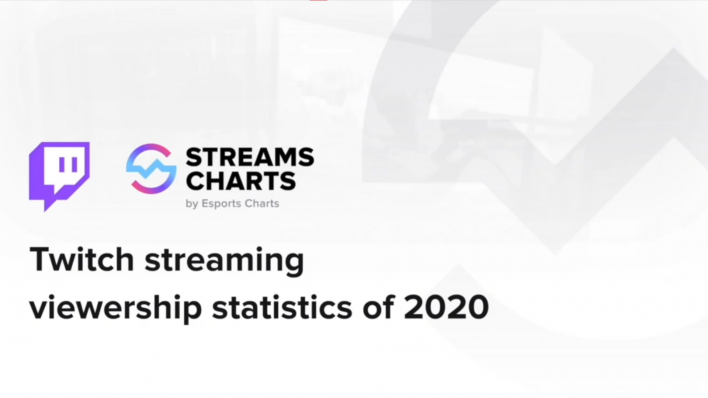
Four companies presented data-driven market updates at the 2021 Esports Investment Summit, which was sponsored and presented by Inven Global.
The EIS 2021 market updates were prepared and presented by:
- Newzoo - a marketing firm
- Niko Partners - a data analytics firm
- Liquipedia - an esports wiki site
- Stream Charts - a streaming data aggregator.
Each market update provided unique insights into the state and direction of the esports industry in 2021. Here are some of the key takeaways from each update.
Newzoo update - The State of the global esports market

The Newzoo Market Update was presented by Remer Rietkerk, head of esports at Newzoo. Newzoo is a marketing firm that has been involved in esports for over a decade and has worked with companies like EA, Nvidia, ESL, and Coca-Cola, among others.
The goal of Rietkerk’s presentation was to give an overview to the state of the global esports market. He argued that the key challenge of the industry over the past year has been COVID-19.
Esports is in a growth phase, which means it is still dependent on sponsors and advertisers. When the COVID-19 market uncertainty hit, many sponsors pulled back on their promotions. This caused significant damage to many organizations in the esports industry.
According to the newest Newzoo 2021 report, total esports revenues in 2020 were 947.1Million, which is 1.1% down YoY. This slouch was driven by a predictable 58.5 million dollar decline in the sale of tickets and merchandise while everything closed for the pandemic. Live events and business models that relied on them have suffered greatly, with COVID impacting 70% of all major esports events in 2020.
In good news, the number of fans around the world continues to grow. Viewership grew by 9.6% globally, gaining 18.2 million viewers in North America and 29.2 Million new viewers in Europe.
VALORANT was discussed during Newzoo’s market update. The game drove 846 million watch hours on Twitch and YouTube in 2020 and was the most exciting esport release of the year.
Rietkerk also mentioned the meteoric rise of mobile esports in 2020. The Free Fire World series in 2019 peaked at 2.01m concurrent viewers and PUBG: Mobile delivered 106.4m watch hours in 2020, driven in large part by the quickly expanding Indian esports audience.
Niko Partners Update - Asia is the heart of the esports

The Niko Partners update was presented by their Founder and president Lisa Comas Hanson.
The key argument that Hanson made in her market update was simple: Asia is the heart of global esports. Esports revenue in Asia in 2019 was 519 million dollars, and that was without including game sales. That means that Asia accounts for over half of global revenue in the entire industry.
The fact that those numbers don’t include game sales is important. That half a billion dollars was purely on the basis of esports events and revenue. Total game sales in Asia in 2020 topped $70.5 billion USD to over 1.3 billion Asian gamers.
According to Niko Partners, 62% of Chinese gamers are drawn to esports, with 60% of gamers across Southeast Asia reporting high levels of interest in professional play. Hanson also pointed out that there are people who don’t play games but do watch esports.
A lot of the recent growth in Asia has been driven by mobile games like Peacekeeper Elite and Honor of Kings, which top the streaming charts in China. These mobile titles have a large and growing presence community as well, as mentioned in the Newzoo report.
Liquipedia Update - Dispelling myths around the esports industry

The Liquipedia update was presented by the Head of Liquipeida Erik Saler. Liquipedia is an esports wiki that has become one of the most trusted sources on the internet for esports news in recent years.
Liquipedia gets around 1.5 million visitors each week from all around the world and ranks 2360th in the world on Amazon Alexa’s site ranking. With over 3.7 million pieces of data and 680,000 articles, it's safe to say they have access to more information about esports than just about anyone else.
The Liquipedia market update was dedicated to using all of this data to do some esports myth-busting.
Myth #1: North America is the only important region for investment in esports
According to Saler, North America looks attractive due to its broadband internet deployment, single market nature, single dominant language, and high median income. However, North America is also a very saturated market that is difficult to gain traction in.
25% of Liquipedia’s traffic comes from SEA, which is in line with the information provided in the Niko Partners market update. Many of the people in SEA live in large cities, with a large percentage of esports viewers living in places like Jakarta, Bangkok, Kuala Lumpur, and Surabaya.
South Asia is growing quickly. PUBG: Mobile is blowing up in India, despite being banned, and esports in India has seen 86% growth in the last year.
Latin America is another fast-growing market, especially in Brazil and Peru. The region makes up about 12% of Liquipedias traffic and is primarily interested in CS:GO and DOTA 2.
Scandinavia and Japan were also mentioned as regions with a lot of potential for growth.
Myth #2: VALORANT is the only growing esport title worth looking at
There are a number of examples of growing esports outside of VALORANT. The games mentioned were PUBG: Mobile, Free Fire, Rocket League, and Apex Legends.
Myth #3: The Publisher needs to be in the driving seat for an esport to succeed
While some big titles like League of Legends, Overwatch, and Call of Duty are heavily controlled by the developer, many of the healthiest esports scenes are actually grassroots-driven. He isolated three other publisher esports strategies: Publishers at odds with esports, hands-off publishers, and cheerleader publishers.
Perhaps the most obvious example of a developer at odds with their esports community is Super Smash Brothers Melee. SSBM has been succeeding massively, despite Nintendo’s active attempts to suppress the esports scene.
Saler also pointed to CS:GO as an example of a hands-off developer, who is allowing the community to drive the esports scene. Valve does support Major tournaments, but much of the esports scene for CS:GO is driven by tournament organizers like Blast and Dreamhack.
A third example that Saler brought up was Age of Empires, as the “cheerleader publisher”, who let the community guide the esport scene and then support them monetarily to advance the vision of the community.
Myth #4: Dead games are dead forever
Age of Empires is one example of a “dead game” rising from the ashes. Other examples include Starcraft 2 and Heroes of the Storm. Heroes of the Storm lost official support from Blizzard in 2018, and yet the game continues to have a consistent player base more than two years later.
Stream Charts update - Most significant Twitch results in 2020

Daniel Shraibman, a partnership and sales manager at Esports Charts, presented the Stream Charts market update at EIS 2021. His presentation focused on the insights gained from 2020 Twitch stats.
The first observation was that Twitch has seen huge viewership growth in the wake of the pandemic. In 2020, Twitch saw 83% more hours watched, 77.8% more average viewers, and 126% more peak viewers. These rates did not appear to go down after quarantine restrictions lightened, indicating that much of the new audience is here to stay.
The most-watched channels in 2020 were xQc, Gaules, Summit1g, ESL_CSGO, and NICKMERCS.
English was the language for 63% of Twitch content in 2020. The second-highest channel language was Spanish at 8.7%, then Portuguese at 5.1%, and then German at 3.6%. 50% of total hours watched were in English, with 9% Spanish, 6.4% Portuguese, and 6.5% Russian.
Games-wise, the largest category was League of Legends followed by Fortnite, though both titles saw lower growth in 2020. Call of Duty content saw a big boost in 2020, growing by 441%. Other games that were popular to stream in 2020 included Minecraft, CS:GO, VALORANT, and GTA V.
Chess also had a big year in 2020. Stream Charts were able to clearly depict the growth in chess viewership after the release of the Netflix miniseries Queen’s Gambit.
-

Aaron is an esports reporter with a background in media, technology, and communication education.
Sort by:
Comments :0





